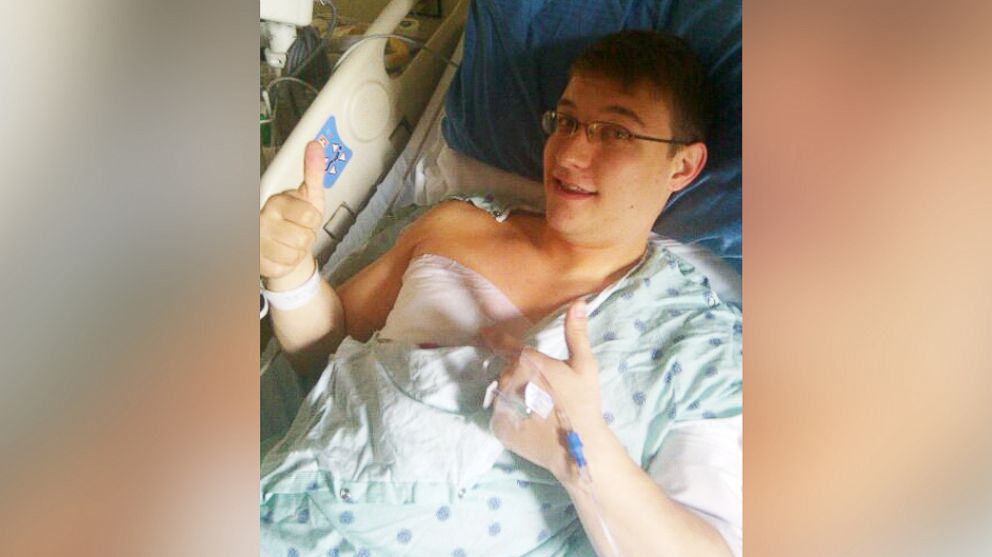More Men With Breast Cancer Opting for Double Mastectomies
Researchers baffled by the increase, given no clear-cut benefit.

— -- Seven years after finding a lump in his chest, Bret Miller was diagnosed with stage 1 breast cancer at age 24. Multiple doctors had brushed off his concerns through the years, telling him it was likely a calcium deposit.
Then, after finally being told he had cancer, Miller, of Prairie Village, Kansas, was dismayed when a doctor recommended a double mastectomy.
“At first, I was listening to what the doctors were saying, but a part of me … I didn’t want to do the double mastectomy,” he said.
A pool manager at the time, Miller, now 29, worried how he would look, saying, “It would have made me feel awkward and not make me want to be around a pool anymore.”
He'd planned to postpone the second mastectomy for a month so he could recover from the first. But the day before his initial surgery in 2010, Miller’s physician told him that after consulting another doctor they would stick with a single mastectomy because he should not be treated exactly like female patients.
He said he was relieved that he only had to have one procedure.
“I know it affects women more … but men still have breasts, as well,” Miller said of his having a mastectomy and being left with a long scar. “It took a little while to be comfortable with it.”
While breast cancer is among the most common cancers for women, male breast cancer is rare and researchers are still trying to understand how men with the disease are being treated, compared to women.
A newly published study released today found that more male breast cancer patients are undergoing double mastectomies, electing to remove unaffected breast tissue as part of their cancer treatment.
The study examined 6,332 men with breast cancer undergoing surgery, and found that for the first time, the number of men having both the affected breast and the unaffected breast tissue removed in a double mastectomy had increased significantly. The percentage of double mastectomies in men nearly doubled to 5.6 percent in 2010-2011 from 3 percent in 2004-2005.
In women, rates of prophylactic double mastectomies have also been rising, especially for women who are younger, white and privately insured, according to the study.
Ahmedin Jemal, vice president of surveillance research at the American Cancer Society and lead researcher in the study, told ABC News it’s unclear why there has been such a dramatic rise in the procedure for men.
“It is concerning because there is no really good evidence” to the benefit in male breast cancer patients, Jemal said.
He explained that for some women with the BRCA gene mutation, which makes them predisposed to breast or ovarian cancer, removal of the breasts prophylactically is recommended. But there is far less evidence that this is an issue in men, he said.
“I think the increase we see is in the general population is not only high risk people but other women and men are getting the mastectomy,” Jemal said.
Men with the BRCA 2 gene have a 7 percent chance of developing cancer in their lifetime, according to the U.S. Centers of Disease Control.
About 2,350 men are diagnosed with invasive breast cancer every year, compared to 231,840 women, according to the American Cancer Society. For men, the lifetime risk of getting breast cancer is 1 in 1,000, compared to 1 in 8 for women.
Thought it’s unclear why there is an increase for double mastectomies in men, Jemal and other researchers said in the study it may be related to genetic testing, family history or fear of the cancer’s return.




